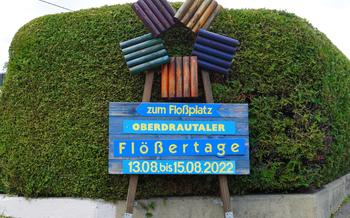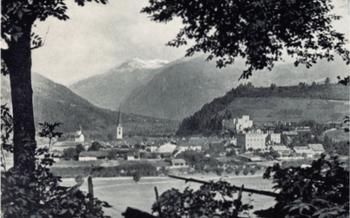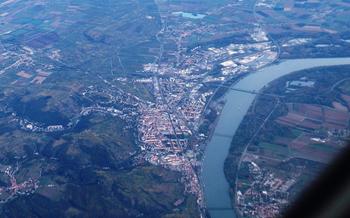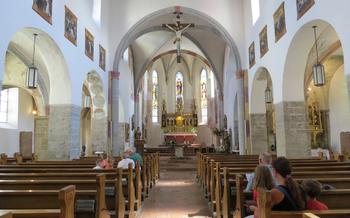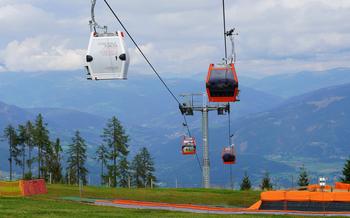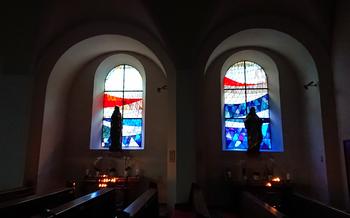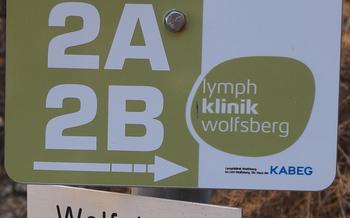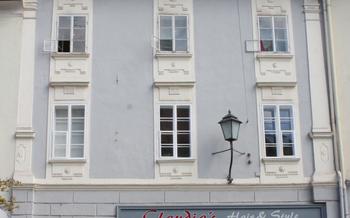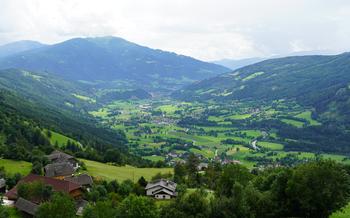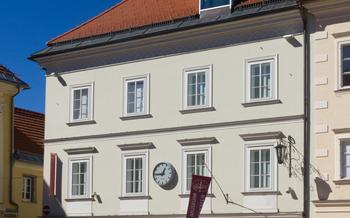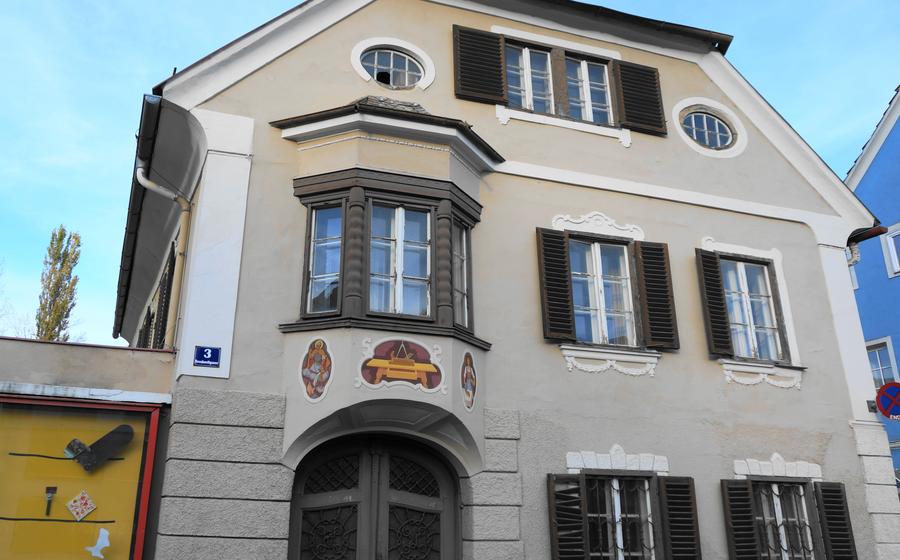
Museum St. Veit
- A Journey to Spittal an der Drau's Past: Exploring Museum St. Veit
- A Glimpse into the City's Heritage: The Archeological Collection
- Uncovering Local Treasures: The Spittal Room
- Art and Nature Converge: The Paintings of Hans Bischoffshausen
- A Touch of the Divine: The Sacred Art Collection
- Preserving Traditions: The Folk Art Exhibition
- War and Remembrance: The World War I Exhibit
- Interactive Learning: Museum Workshops and Activities
- Delving into Local History: Guided Tours
- Temporary Exhibitions: A Constant Evolution
- Accessibility for All: Museum Facilities
- Capturing Memories: Museum Shop and Café
- Planning Your Visit: Practical Information
- Beyond the Museum: Exploring Spittal an der Drau
- Insider Tip: Discovering Hidden Gems
A Journey to Spittal an der Drau's Past: Exploring Museum St. Veit
Museum St. Veit, a treasure trove of history and culture, invites visitors to embark on a journey through the captivating past of Spittal an der Drau. Nestled in the heart of the city, this architectural gem stands as a testament to Spittal's rich heritage, showcasing the region's profound connection to the past.
The museum's journey begins in the depths of time, tracing Spittal's origins back to its humble beginnings as a small settlement in the Roman era. Over the centuries, Spittal blossomed into a thriving trade center, leaving an indelible mark on the landscape of Carinthia. Museum St. Veit serves as a gateway to this fascinating history, offering visitors a glimpse into the lives, traditions, and achievements of Spittal's ancestors.
The building itself, a harmonious blend of Gothic and Renaissance architectural styles, is a sight to behold. Its intricate stone carvings, delicate frescoes, and soaring towers transport visitors to a bygone era, evoking the grandeur of Spittal's past. Whether you're a history buff, an art enthusiast, or simply curious about the roots of this charming city, Museum St. Veit promises an immersive and enriching experience.
A Glimpse into the City's Heritage: The Archeological Collection
As you step into the archeological section of Museum St. Veit, you'll embark on a journey through time, exploring the ancient roots of Spittal an der Drau. Discover artifacts that date back to the Neolithic period, providing glimpses into the lives of the earliest settlers in the region. Unearth remnants of the Roman Empire, including coins, pottery, and tools, offering insights into the town's rich history as a trading hub.
Through interactive displays and hands-on exhibits, you'll gain a deeper understanding of Spittal's early settlements. Learn about the daily lives of the inhabitants, their customs, and their interactions with the surrounding environment. Experience the thrill of discovery as you uncover the secrets of Spittal's past, piece by piece.
Uncovering Local Treasures: The Spittal Room
The Spittal Room is a treasure trove of discoveries unearthed during excavations within Spittal an der Drau. This dedicated space showcases artifacts that provide invaluable insights into the city's development and unique history. From ancient tools and pottery to remnants of medieval buildings, each find tells a story of Spittal's past.
One of the most significant discoveries is a collection of Roman coins dating back to the 1st century AD. These coins suggest the presence of a Roman settlement in the area, shedding light on Spittal's early origins. Another highlight is a well-preserved wooden water pipe from the 16th century, offering a glimpse into the city's water management system during that period.
The Spittal Room also features interactive displays that allow visitors to engage with the exhibits in a hands-on way. Through touchscreens and multimedia presentations, visitors can explore the history of Spittal, learn about the significance of the artifacts, and gain a deeper understanding of the city's rich heritage.
Art and Nature Converge: The Paintings of Hans Bischoffshausen
The walls of Museum St. Veit are adorned with the striking works of Hans Bischoffshausen, a renowned Austrian artist who captured the essence of Spittal and its surroundings through his paintings. Born in the city in 1879, Bischoffshausen developed a deep connection with the region's landscapes, people, and rich history, which he translated onto canvas with remarkable skill.
Bischoffshausen's paintings are a testament to his love for nature. He masterfully depicted the rolling hills, lush forests, and shimmering rivers that define Spittal's surroundings. His landscapes are characterized by vibrant colors, intricate details, and a sense of tranquility that invites viewers to immerse themselves in the beauty of the natural world.
Beyond landscapes, Bischoffshausen also created stunning portraits that captured the essence of the local people. His subjects exude a quiet dignity and strength, reflecting the character and resilience of the Spittal community. His portraits offer a glimpse into the lives and personalities of the individuals who shaped the city's history.
Furthermore, Bischoffshausen's religious motifs showcase his deep spirituality. His paintings of biblical scenes and saints are imbued with a sense of reverence and awe. The intricate details and symbolism in these works reveal Bischoffshausen's mastery of both artistic techniques and religious iconography.
The connection between Bischoffshausen's art and the surrounding nature is evident in his choice of subjects and his use of color. His landscapes are often bathed in warm, golden hues that evoke the glow of the sun-kissed hills and fields. The vibrant greens and blues in his paintings mirror the lush vegetation and the sparkling waters of the region.
Bischoffshausen's works offer visitors a unique perspective on Spittal's history and culture. They not only showcase the beauty of the region but also provide a glimpse into the soul of the artist and the community he belonged to. Through his paintings, Hans Bischoffshausen has left an indelible mark on Museum St. Veit, making it a must-visit destination for art enthusiasts and history buffs alike.
A Touch of the Divine: The Sacred Art Collection
Museum St. Veit houses a remarkable collection of sacred art, offering visitors a glimpse into the spiritual and artistic traditions of Spittal an der Drau. This diverse collection spans various periods, from the Middle Ages to the Baroque era, showcasing exquisite sculptures, paintings, and liturgical objects.
Among the highlights of the sacred art collection is a stunning wooden sculpture of the Madonna and Child, dating back to the 15th century. The intricate carvings and delicate features of the figures exude a sense of serenity and divine grace. Visitors can also admire a collection of paintings depicting religious scenes, such as the Last Supper and the Crucifixion, each offering a unique interpretation of biblical narratives.
The museum's collection of liturgical objects includes ornate chalices, reliquaries, and monstrances, each intricately crafted with precious metals and gemstones. These objects provide insights into the rituals and ceremonies of the Catholic Church, highlighting the importance of religious symbolism in the community.
The sacred art collection at Museum St. Veit is not only a testament to the artistic prowess of the region's artisans but also a reminder of the deep-rooted spiritual heritage of Spittal an der Drau. Whether visitors are art enthusiasts, history buffs, or simply seeking a moment of contemplation, this collection offers a profound and enriching experience.
Preserving Traditions: The Folk Art Exhibition
The Folk Art Exhibition at Museum St. Veit is a treasure trove of traditional crafts, costumes, and customs from the Spittal region. This collection offers a glimpse into the daily lives and heritage of the local people, preserving and showcasing the unique traditions that have shaped Spittal's identity.
Exhibits include intricately carved wooden sculptures, vibrant traditional costumes adorned with intricate embroidery, and an array of tools and utensils that tell the story of past generations. Visitors can learn about the significance of these objects in the everyday lives of Spittal's inhabitants, gaining insights into their skills, creativity, and deep connection to their cultural roots.
The Folk Art Exhibition highlights the importance of preserving and celebrating these traditions, ensuring that they are not forgotten or lost to time. It serves as a reminder of the region's rich cultural heritage, fostering a sense of pride and appreciation among the local community and visitors alike.
War and Remembrance: The World War I Exhibit
Spittal an der Drau played a significant role during the First World War, serving as a key transportation hub and a strategic location for military operations. The museum's World War I exhibit sheds light on this pivotal period in the city's history. Through artifacts, documents, and personal accounts, visitors can gain a deeper understanding of the war's impact on Spittal and its people.
The exhibit showcases a variety of artifacts, including uniforms, weapons, and equipment used by soldiers on both sides of the conflict. These tangible relics offer a glimpse into the harsh realities of trench warfare and the sacrifices made by those who fought. Visitors can also explore interactive displays that recreate the sounds and sights of the battlefield, providing a more immersive experience.
Personal accounts and letters from soldiers and civilians offer a poignant perspective on the war's human toll. These firsthand narratives reveal the courage, resilience, and heartbreak experienced by those who lived through this tumultuous period. Through these personal stories, visitors gain a deeper appreciation for the sacrifices made by the people of Spittal during the war.
The World War I exhibit at Museum St. Veit serves as a powerful reminder of the devastating impact of war and the importance of peace. It is a tribute to the courage and resilience of the people of Spittal and a testament to the enduring legacy of the First World War.
Interactive Learning: Museum Workshops and Activities
Museum St. Veit goes beyond static exhibits to offer a dynamic and engaging experience through its workshops and activities. Designed for visitors of all ages, these hands-on programs transform the museum into a vibrant learning space. School groups and organized tours can tailor their visit to include educational activities aligned with their curriculum.
Interactive workshops bring history to life, allowing participants to experience the past firsthand. They can engage in archaeological excavations, simulating the thrill of uncovering ancient artifacts. Art enthusiasts can unleash their creativity in painting workshops inspired by the works of Hans Bischoffshausen, capturing the essence of Spittal's landscapes and traditions.
The museum also hosts regular events and workshops that delve into specific themes and topics. These events provide a platform for experts and enthusiasts to share their knowledge and insights, fostering a sense of community and dialogue. By actively engaging with the exhibits and participating in workshops, visitors gain a deeper understanding of Spittal's rich history and cultural heritage.
Delving into Local History: Guided Tours
Guided tours at Museum St. Veit offer a unique opportunity to delve deeper into the history and significance of Spittal an der Drau. Knowledgeable guides lead visitors through the various exhibits, providing expert insights and anecdotes that bring the past to life. These tours are tailored to suit different interests and levels of knowledge, ensuring a personalized experience for every visitor.
Whether you're a local resident seeking a deeper understanding of your hometown or a tourist eager to uncover the city's hidden stories, guided tours are an excellent way to make the most of your visit to Museum St. Veit. The guides' passion for Spittal's history is contagious, and their enthusiasm will leave you with a newfound appreciation for this charming city.
Book your guided tour in advance to secure your spot and choose the time that best fits your schedule. Group bookings are also available for schools, organizations, and families.
Temporary Exhibitions: A Constant Evolution
Museum St. Veit continuously presents a dynamic and ever-changing landscape of temporary exhibitions. These rotating displays delve into diverse themes and topics, reflecting the rich tapestry of Spittal's history and culture. Temporary exhibitions provide a platform for showcasing specific aspects of the region's heritage, shedding light on hidden stories, and presenting fresh perspectives. They may focus on local artists, historical events, technological advancements, or cultural traditions.
This fluidity and flexibility allow the museum to remain relevant and engaging, catering to a wide range of interests and ensuring a unique and immersive experience with each visit. Temporary exhibitions often feature interactive elements, multimedia presentations, and engaging storytelling techniques to captivate visitors and create a lasting impression. Whether you're a history buff, an art enthusiast, or simply curious about Spittal's diverse cultural heritage, there's always something new and exciting to discover in the temporary exhibition spaces.
Accessibility for All: Museum Facilities
Museum St. Veit is committed to ensuring that all visitors, regardless of their abilities, can fully enjoy and engage with the museum's exhibits and programs. The museum is wheelchair accessible, with ramps and elevators providing easy navigation throughout the building. Audio guides in multiple languages are available to enhance the experience for visitors who may be deaf or hard of hearing. Additionally, the museum provides educational materials and resources in various formats to accommodate visitors with disabilities. These efforts demonstrate the museum's dedication to inclusivity and its commitment to creating a welcoming and accessible environment for all.
Capturing Memories: Museum Shop and Café
The Museum St. Veit offers a unique opportunity to take home a piece of Spittal's history and culture through its well-stocked museum shop. Visitors can browse a carefully curated selection of souvenirs, gifts, and publications inspired by the museum's collection. From replicas of ancient artifacts to contemporary artworks and books on local history, the shop offers something for every taste and budget.
The museum's café provides a welcoming space for visitors to relax and refuel after exploring the exhibits. Located within the museum building, the café offers a variety of refreshments, including hot and cold beverages, light snacks, and homemade cakes. Visitors can enjoy their refreshments while taking in the inspiring views of the museum's courtyard or the surrounding city.
The museum shop and café not only enhance the visitor experience but also contribute to the museum's sustainability by generating revenue that supports its ongoing operations and educational programs. By making a purchase or enjoying a break in the café, visitors can directly contribute to the preservation and promotion of Spittal's rich heritage.
Planning Your Visit: Practical Information
To ensure a smooth and enjoyable experience, it's essential to plan your visit to Museum St. Veit. The museum is typically open from Tuesday to Sunday, with varying hours depending on the season. Admission fees are reasonable, offering discounts for students, seniors, and families. Contact details, including phone numbers and email addresses, are available on the museum's website for any inquiries or reservations.
Before your visit, consider booking a guided tour for a more immersive and informative experience. Guided tours are available in multiple languages and can be tailored to your specific interests. Group bookings are also possible, making it a great option for school trips or organized group outings.
For those unable to visit in person, the museum offers virtual tours and online resources that provide a glimpse into the exhibits and the rich history of Spittal an der Drau. These virtual experiences allow you to explore the museum's collection from the comfort of your own home or classroom.
Beyond the Museum: Exploring Spittal an der Drau
After immersing yourself in the rich history and culture of Spittal an der Drau at Museum St. Veit, take some time to explore the charming city and its surroundings. A leisurely stroll through the picturesque old town reveals hidden gems such as the Renaissance-style Rathaus (town hall), the 13th-century Stadtpfarrkirche (parish church), and the Spittal Mill, a beautifully preserved watermill.
For a breathtaking panoramic view of the city and the surrounding mountains, make your way to Schloss Porcia, a magnificent Renaissance castle perched on a hill overlooking Spittal. Explore the castle's opulent interior, which houses a museum dedicated to local history and culture.
Nature enthusiasts will delight in the nearby Drau Radweg, a scenic cycling path that follows the course of the Drau River. Pedal through enchanting landscapes, passing tranquil lakes, lush forests, and charming villages. The path offers various routes, catering to different fitness levels and interests.
To delve deeper into the region's history, visit the Millstätter See, a stunning alpine lake just a short drive from Spittal. Discover the Benedictine Millstatt Abbey, founded in the 11th century, and explore the fascinating Millstatt Museum, which showcases the area's rich cultural heritage.
Whether you prefer exploring historical landmarks, immersing yourself in nature, or simply relaxing in the tranquil surroundings, Spittal an der Drau and its environs offer a wealth of experiences to create lasting memories.
Insider Tip: Discovering Hidden Gems
Beyond the main exhibits, Museum St. Veit holds hidden treasures waiting to be discovered. In the basement, a small room displays an intriguing collection of medieval graffiti. These ancient scribbles, etched into the walls by visitors centuries ago, offer a glimpse into the lives and minds of Spittal's past inhabitants.
Another hidden gem is the museum's courtyard, a tranquil oasis often overlooked by visitors. Surrounded by ancient walls and adorned with colorful flowers, it provides a peaceful retreat from the bustling city streets. Take a moment to sit on one of the benches and soak in the serene atmosphere, imagining the stories these walls could tell.
For photography enthusiasts, the museum's rooftop terrace offers a unique perspective of Spittal. Capture panoramic views of the city, with the majestic Alps as a backdrop. The golden glow of sunset casts a magical light on the surrounding landscape, creating unforgettable photo opportunities.
Unveiling these hidden gems transforms a visit to Museum St. Veit into an adventure of discovery. Embrace the spirit of exploration and uncover the secrets that lie within its walls. Every nook and cranny holds a story, waiting to be revealed to those who seek it.
